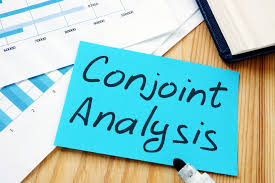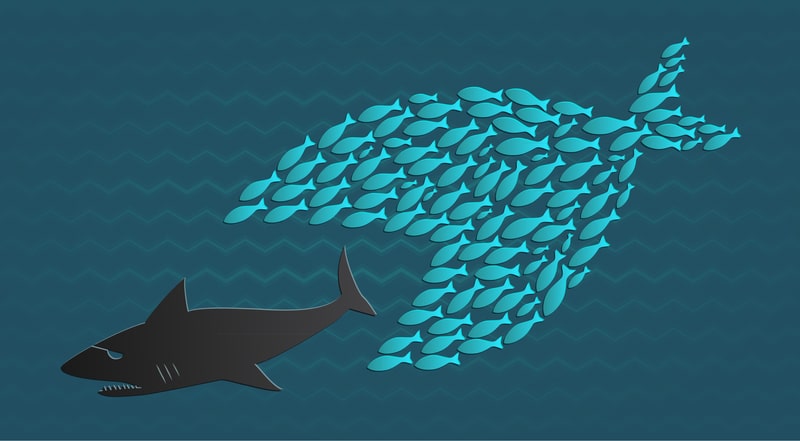Practicing various problem-solving strategies can assist professionals in developing efficient answers to difficulties they face at work and in their daily lives. Because each sector, business, and career presents its own set of obstacles, individuals may adopt a variety of approaches to address them. If you want to learn how to solve problems more effectively, understanding how to apply various popular problem-solving strategies may be useful. In this post, we will define problem-solving and its process, explain why it is important, and provide a list of team problem-solving strategies in Psychology that you may attempt.
What is Problem-Solving
The art of detecting problems and implementing the best feasible solutions is known as problem-solving. Revisiting your problem-solving abilities could be the missing link in maximizing your company’s performance, achieving lean success, or unleashing your career potential.
If you ask any coworker if they are an effective problem solver, they will most likely respond, “Of course! “I solve problems every day.” Sure, problem-solving is part of the majority of job descriptions. However, not everyone is capable of doing so on a constant basis.
Problem-Solving Process
The process of defining a problem, determining its root cause, prioritizing and selecting potential solutions, and implementing the chosen solution is known as problem-solving.
Leadership must guide their staff and build problem-solving process strategies in order to properly manage and maintain a successful firm. Following the basic four-step problem-solving process and technique provided below can help you find an appropriate solution for your problems.
#1. Define the problem
Diagnose the situation so that your attention is drawn to the problem rather than its symptoms. Flowcharts can be used to identify the expected steps of a process, while cause-and-effect diagrams can be used to define and analyze root causes.
The sections that follow outline crucial steps in the problem-solving process. These phases encourage the participation of interested parties, the use of factual information, the comparison of expectations to reality, and a focus on the underlying causes of a problem. You should start by:
- Examining and documenting present processes (e.g., who does what, with what information, with what technologies, with what organizations and individuals, in what time frame, and in what format).
- Considering the impact of new technologies and altered policies on the development of your “what should be” model.
#2. Create alternative solutions
Defer choosing a solution until multiple problem-solving alternatives have been provided. Taking into account different possibilities might greatly increase the value of your ideal solution. Once you’ve agreed on the “what should be” model, this goal standard serves as the foundation for creating a road map for researching alternatives. In this stage of problem-solving, brainstorming, and team problem-solving techniques are equally beneficial.
Before the final evaluation, many alternative solutions to the problem should be produced. A common error in problem-solving is evaluating alternatives as they are given so that the first acceptable solution is selected, even if it is not the best match. When we focus on getting the results we want, we miss out on the opportunity to learn something new that will allow for actual improvement in the problem-solving process.
#3. Consider and choose alternative
skilled problem solvers take into account a number of factors when choosing the best choice. They assess the extent to which:
- A specific solution will fix the problem without introducing further unanticipated problems.
- The alternative will be accepted by all parties involved.
- Implementation of the alternative is likely.
- The alternative is compatible with the organizational limitations.
#4. Implement and monitor the solution
Leaders may be asked to guide others in implementing the solution, to “sell” the solution, or to support execution with the assistance of others. Involving people in the implementation process is an effective strategy to acquire buy-in and support while reducing opposition to future changes.
Regardless of how the solution is implemented, feedback channels should be included. This enables continuous monitoring and testing of actual events in relation to expectations. Problem-solving and the approaches used to create clarity are most effective when the solution is retained and changed to respond to future changes.
What are Problem-solving Strategies?
A problem-solving strategy is a plan for overcoming a problem or finding a solution. Each problem-solving method comprises a number of phases that will assist you through the process of resolving a company problem or industry challenge. Effective problem-solving necessitates the identification of the problem, the selection of the appropriate process to approach it, and the implementation of a strategy adapted to the unique issue at hand.
Why is it Important to Understand Multiple Problem-Solving Strategies?
Understanding how various problem-solving strategies work is vital in a team setting since different challenges require you to approach them in different ways to discover the optimal solution. By mastering multiple problem-solving skills, you will be able to effectively choose the best course of action when presented with future obstacles. This can assist you in solving difficulties more quickly and developing stronger critical thinking skills.
Team Problem-Solving Strategies
There are numerous approaches to problem-solving. Each is appropriate for a different type of problem. The best problem-solving strategies for your team will be determined by the nature of the challenge. You may need to try a few different approaches before you find one that works.
Here are some problem-solving strategies you can try out to see which ones work best for you and your team in different situations:
#1. Define the problem
Taking the effort to define a prospective difficulty might assist you in identifying specific elements and developing a plan to tackle them. Breaking down different areas and potential solutions to a problem can assist you in determining how extensive the challenge may be and what strategies to implement for a resolution.
#2. Visualize the problem
If you are intimately involved with a problem or situation, you may find it difficult to assess its full scope. In these cases, try to visualize the problem by focusing on each individual element.
#3. Create a problem diagram.
While visualizing the problem can be beneficial, understanding a more complex problem may be easier if you can see it. To help you illustrate the situation, try drawing a picture or a diagram. For example, if you want to improve the speed with which your team develops and sells a product, you could depict several steps of the process to help you identify potential areas for improvement.
#4. Divide the problem into smaller parts.
It may be beneficial to divide larger problems into smaller pieces or steps. This allows you to concentrate on resolving each smaller piece of the problem separately, which may be more manageable. Begin by identifying the requirements for solving this problem.
#5. Reframe the problem
If the problem appears to be intractable, consider redefining it. For example, if a company you work for wants to develop a specific product and requires additional resources to do so, you could reframe the problem by asking why the company wants to develop this product in the first place.
#6. Gather and organize problem-related information.
A particular action may result in a problem that is reinforced over time. Collecting information about the problem and organizing it into a chart, table, or list can help you identify if there is an underlying pattern.
#7. Work backward
Working backwards is sometimes the best method to tackle an problem. This can be useful if you need to reproduce specific occurrences in order to find the source of a problem. For example, a car company may wish to create a vehicle that outperforms their competitor’s most recent model. To accomplish this, they may reverse engineer their competitor’s car to determine how it was created. Then they can repeat the processes their competition followed to develop an even better automobile.
#8. Employ the Kipling Method
The Kipling Method, named after Rudyard Kipling’s poem “I Keep Six Honest Serving Men,” is a well-known problem-solving method. It emphasizes six key questions to consider the next time you face a dilemma. These are the six questions:
- What is the problem?
- Why is the problem important?
- When did the problem arise, and when does it need to be solved?
- How did the problem happen?
- Where is the problem occurring?
- Who does the problem affect?
Answering each of these questions can help you identify what steps you need to take next to solve it.
#9. Use your past experience
Take the time to analyze if you have encountered a similar situation to your current dilemma in the past. This can help you create links between distinct events. Ask yourself how you tackled the previous scenario, and adapt those methods to the problem you are currently trying to solve.
#10. Bring in a facilitator
If you are trying to tackle a complex problem with a group of other individuals, bringing in a facilitator can help boost your efficiency and moderate your collaboration. Having an impartial third party can help your group stay on topic, document the process, and have a more meaningful conversation. Consider inviting a facilitator to your next group gathering to help you produce better solutions.
#11. Consider the trial-and-error approach
If your problem has numerous solutions and you are trying to identify the best one, then the trial-and-error approach may be effective. Make a list of numerous probable answers and then try them one by one. Take notes as you go so you have something to reference once you have completed your experiments. Then utilize this knowledge to decide the most effective remedy.
#12. Create an evaluation decision matrix
If you design several solutions to an issue, you may need to choose the finest one. A decision matrix can be an effective tool for assisting you with this process because it allows you to rank various solutions. When ranking each prospective solution, consider the following factors:
- Timeliness
- Risk
- Manageability
- Expense
- Practicality
- Effectiveness
After deciding which elements to include, use them to score each prospective solution by assigning a weighted value of 0 to 10 in each of these categories.
#13. Seek assistance from your peers.
Getting feedback from your peers might introduce you to new ideas and solutions. Friends, family, and coworkers may have varied experiences, ideas, and abilities that can help you find the best solution to your situation.
#14. Step away from the problem
If the problem you’re working on doesn’t require an immediate solution, consider taking a break from it. You can do this physically by going for a walk to clear your thoughts, or metaphorically by putting the problem aside for a few days until you are ready to tackle it again. Allowing yourself time to rest, exercise, and care for your own well-being will make returning to the problem simpler since you will be more invigorated and focused.
Your staff will be able to work together more successfully, with fewer disagreements, and with a better possibility of landing on an optimal creative solution to the problem at hand if you use these team problem-solving strategies. Most of these tactics grow more effective with repetition; your employees will become accustomed to your processes and criteria, and your meetings will run more smoothly in the future, so stick to your plan.
Problem-Solving Strategies Psychology
The approaches or techniques used to discover, analyze, and address problems or difficulties are referred to as problem-solving strategies. Problem-solving strategies are frequently investigated in psychology as part of cognitive processes and are essential for individuals to successfully navigate daily life.
Various problem-solving strategies have been identified and studied in psychology, including:
- Trial-and-error: This method entails attempting various solutions until one that works is discovered.
- Algorithm: An algorithm is a step-by-step technique that ensures a problem solution, such as following a recipe.
- Heuristics: Heuristics are mental shortcuts that can assist people come to a solution to a problem quickly, such as employing a rule of thumb or past experience to guide decision-making.
- Analogical reasoning: This method entails identifying parallels between a current problem and a previously solved problem to aid in the identification of a solution.
- Working backward: This method begins with the desired solution and works backward to find the steps required to accomplish it.
- Decomposition: Decomposition is the process of breaking down a difficult problem into smaller, more manageable elements in order to find a solution.
- Mind mapping: Mind mapping is the process of developing a visual representation of an issue and its potential solutions in order to assist people in better understanding and organizing their thoughts.
Different problem-solving strategies may be more effective in different settings, and individuals in psychology may employ a combination of strategies to handle difficult problems. Effective problem-solving strategies in psychology can help people manage stress, make better decisions, and achieve their goals.
What Are the 5 Strategies of Problem-Solving?
The five steps to problem-solving strategies are as follows:
- Determine the problem.
- Break the problem down.
- Make a list of potential solutions.
- Consider the many options.
- Solutions must be implemented and monitored.
What Are the Five 5 Most Common Methods in Problem-Solving?
The five problem-solving steps
- Define the issue. Alternatively, what problem are you attempting to solve?
- Create a list of ideas. Alternatively, what are some possible solutions to the problem?
- Choose a solution. Alternatively, what are you going to do?
- Put the solution into action. Alternatively, what are you doing?
- Examine the outcomes. Alternatively, what did you do?
What Are 3 Different Types of Problem-Solving Strategies?
Typical approaches include trial and error, the use of algorithms, and the use of heuristics.
What Are the Six Problem-Solving Skills?
Define the problem, brainstorm solutions, analyze your options, select a solution, develop a plan, and then evaluate your plan, as this is a straightforward, step-by-step approach to overcoming business challenges and obstacles.
What Are the 4 C’s Problem-Solving?
Communication, collaboration, critical thinking, and creativity are referred to as the four c’s and are all necessary skills in today’s world.
Conclusion
Individuals must use problem-solving strategies to manage daily life and successfully overcome problems. Individuals can use a variety of problem-solving strategies, such as trial-and-error, algorithms, heuristics, analogical reasoning, working backward, decomposition, and mind mapping.
Effective problem-solving necessitates locating the source of the issue, understanding it, and devising a solution. It could require creativity, critical thinking, and decision-making abilities.
- CUSTOMER SERVICE TRAINING: Top Programs, Ideas & Certificate
- Problem Solving Skills: Examples on How to Demonstrate them
- KEY CUSTOMER SERVICE SKILLS: Complete List, Resume, Training & Interview Questions
- HOW TO BE A GOOD MANAGER: Effective Steps to Take To Become a Good Manager
- LEADERSHIP ATTRIBUTES: The Top Key Strong Attributes that Make a Good Leader
- MANAGING RESISTANCE: 7 + Tips for Managing Resistance To Change






